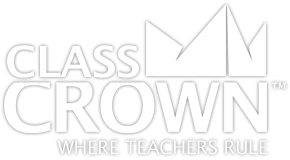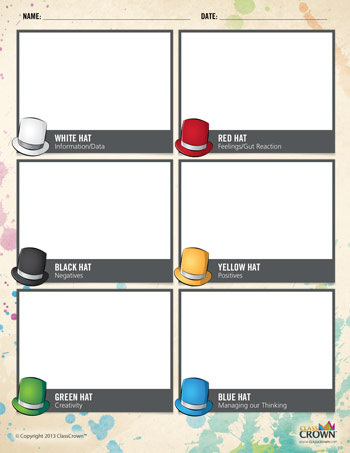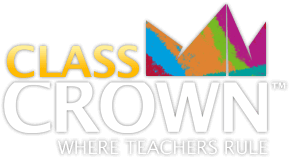“Learn the 10 Amendments to the Constitution by Friday. There will be a quiz worth 20 points,” the teacher says after she teaches her students a pneumonic device to memorize the amendments.
While it is certainly imperative that students know the Bill of Rights, what good is it, really, if they can’t think critically about why they were added to the Constitution in the first place? With state testing placing extra pressure on teachers to spend much of their time “teaching to the test,” teaching critical thinking skills often falls by the wayside in classrooms. But how can we call ourselves good teachers if we haven’t taught our students how to think so that they can apply these strategies to the myriad situations and circumstances they will encounter in their futures?
Teaching critical thinking skills sounds nice, but also seems amorphous. How exactly does one go about it? Teachers who are determined not only to address the state standards, but also to teach their students the essential skill of thinking critically may find psychologist Edward De Bono’s 6 Thinking Hats strategy helpful.
The Thinking Hats strategy is a simple way for students to approach problems and ideas from different points of view and encourages them to think below the surface. Each hat requires the thinker or group of thinkers to contemplate an issue from a different perspective:
White Hat: Information/Data
With this hat on, students will consider the information they have about the topic and will answer the questions:
What information do we have?
What do we know?
If students were considering the Bill of Rights in a group, for instance, they would discuss what they know about the Bill or Rights, which may be their content and a bit about the reasons they were added and who insisted upon them.
Red Hat: Feelings/Gut Reaction
When students put on the red hat, they will consider their feelings with regard to the topic/problem and will answer the questions:
What do we feel?
What is my instinct/gut reaction telling me about this?
When discussing the Bill or Rights, students might consider how they feel about the amendments. What would their lives b e like without them? What emotions would they feel if they were taken away?
Black Hat: Negatives
With the black hat on, students consider the negatives or drawbacks of a particular idea or concept.
What are the drawbacks?
What are potential bad results of this decision?
For instance, when learning and discussing the first 10 Amendments to the Constitution, students might discuss the drawbacks of any of the Amendments. Students might discuss the tension between liberty and safety. Sometimes more freedom means more risk, but to our founding fathers, liberty was of more value than protection that required the sacrifice of freedom. Do your students agree?
Yellow Hat: Positives
The yellow hat requires considering all of the positive aspects of the idea in consideration.
What are the benefits of this idea?
What good would come from this decision?
With regard to the Bill of Rights, students might discuss how citizens of the past and present benefit from these enumerated rights.
Green Hat: Creativity
While wearing the green hat, students think creatively about new ideas related to the idea in question. They ask,
What ideas have we got?
What are some possible solutions to this problem?
With respect to the Bill of Rights, students might consider if there ought to have been any changes to the Bill or Rights? Is a new Amendment to the Constitution necessary to secure present liberties? This might lead them to a discussion about how new Amendments to the Constitution are passed.
Blue Hat: Managing our Thinking
With the blue hat on, students ensure that they are thinking about and organizing their thinking. There should be an end goal in mind during the Thinking Hats discussion. Students should be trying to reach a consensus or ensuring that they are covering all important parts of discussion. When wearing the blue hat students ask,
What are our aims?
If students were to put on the blue hat in their discussion of the Bill or Rights, they would evaluate their own thinking and ensure that they have thought deeply and critically with each of the hats on. Did everyone have a chance to speak? Are all thoughts recorded? Perhaps the goal of the discussion was to help students think about the topic before writing a paper on it. Was the discussion adequate to provide a jumping off point to begin writing?
Other Ideas for Using the Six Thinking Hats
There are endless teaching scenarios where it would be appropriate to use the 6 Thinking Hats Strategy to encourage students to think critically. Here are just a few ideas:
• During Literature Circles: Have students discuss an aspect of the novel/picture book they are reading using the Six Thinking Hats. For instance, if a character in the novel is trying to make a decision, the students could use the strategy to decide what they think the character should do.
• During discussions of history: Use the Hats when students are discussing historical events. Example: should the United States have used the atomic bombs on Hiroshima and Nagasaki at the end of WWII?
• To Aid in Class Decision-Making: Include the class in making a decision that impacts them. Manage the discussion using the Thinking Hats strategy. For instance, should tests be given on Fridays, or will students likely perform better on another day of the week?
• To Help Students Prepare for Writing a Paper: Use the 6 Hats Strategy as a method for brainstorming for a paper. Example: use to help prepare for the writing of a persuasive paper so that all points of view are considered and counter-arguments can be rebutted.
Free Printable
Use this free printable for students to record their thoughts as they use the 6 Thinking Hats Strategy to engage in a discussion: Click Here



